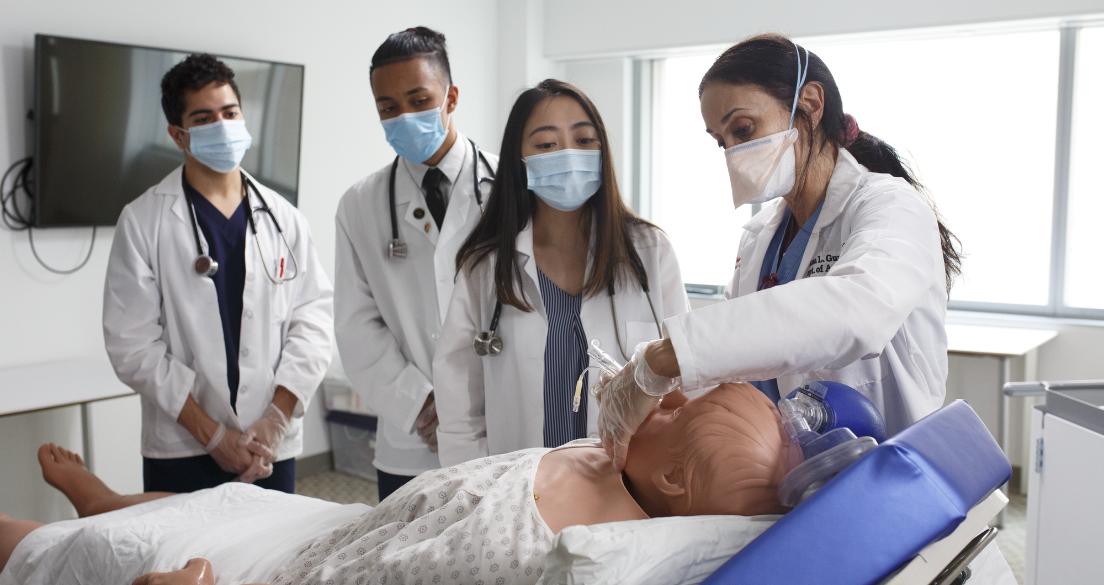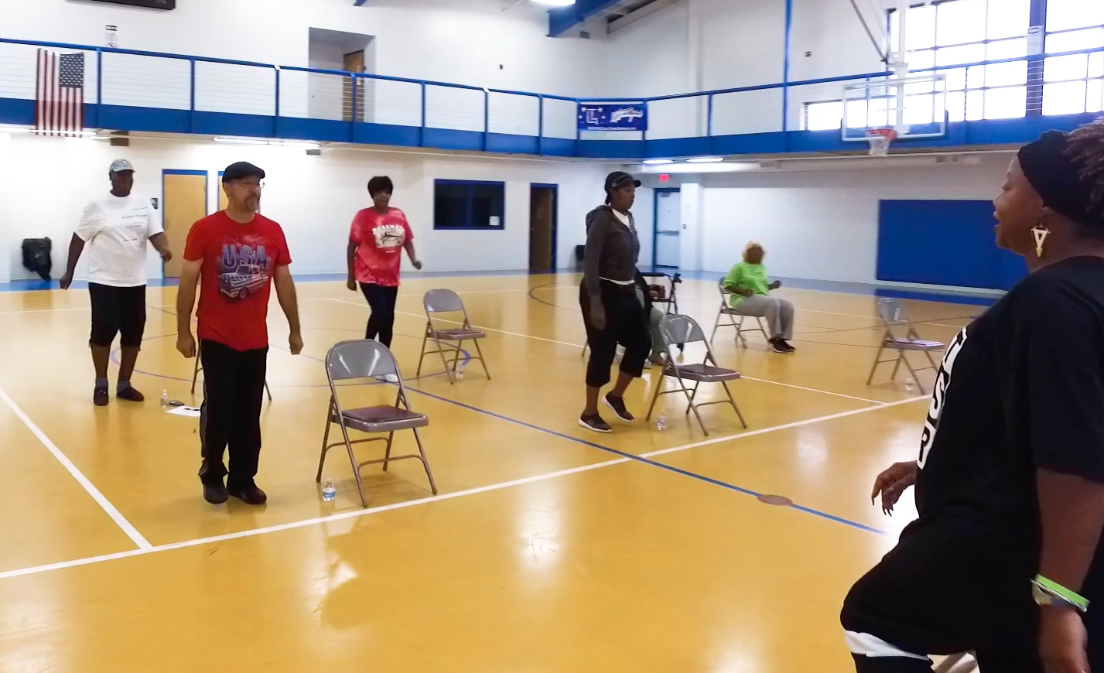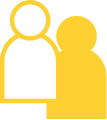Shaping the Future of Medicine
What Starts Here Shapes the Future of Medicine
How academic medicine educates the doctors of tomorrow

Credit: Weill Cornell Medicine
The U.S. will see a shortage of up to up to 86,000 physicians by 2036. Academic medicine’s 160 medical schools and nearly 500 academic health systems and teaching hospitals are addressing this gap and training the next generation to meet the future.
Key Takeaways:
- In 2021, medical school applications rose by 18%. Some 95,475 students enrolled, with slightly more women than men
- Diversity is on the rise: Medical schools saw increases in Black, Hispanic and women applicants and enrollees in 2021
- Increased training in telehealth and emerging technologies are preparing tomorrow’s doctors for tomorrow’s health care
- Students are being trained to confront today’s pressing public health crises, like opioid addiction, maternal mortality, climate-related health effects, and more
Physicians’ centuries-old solemn vow to uphold the highest ethical standards in medicine is well known, but there’s another equally important promise that all health professionals make: Never stop learning.
It’s a standard that drives innovation in medical education today, instilling adaptive learning that responds to the ever-evolving role health care plays in the lives of Americans. And as with many innovative practices, academic medicine leads the way.
“It’s not like we fill up the medical student then the learning stops,” says Lisa Howley, PhD, senior director of strategic initiatives and partnerships at the Association of American Medical Colleges (AAMC). “The pace of change is so rapid that new knowledge, discoveries, and innovations make this learning process lifelong.”
“The pace of change is so rapid that new knowledge, discoveries, and innovations make this learning process lifelong.”
Lisa Howley, PhD, senior director of strategic initiatives and partnerships at
the Association of American Medical Colleges (AAMC)
“No one size fits all”
Across the U.S., academic medicine’s over 160 medical schools and nearly 500 academic health systems and teaching hospitals are training the next generation of physicians and health care professionals, using the latest medical knowledge. Our curricula constantly adapt to address big health challenges and new modes of care—like incorporating specific training to advance telemedicine, address health equity, or help combat the opioid epidemic.
By looking for adaptive learners who also want to understand the role of equity in care, academic medical centers are recruiting the best and brightest—and helping to keep the pipeline of future physicians strong even as the U.S. could see a shortage of up to 86,000 physicians by 2036.
Key to meeting this challenge is creating inclusive learning environments that bring together students from all backgrounds, as well as developing programs and policies geared toward minorities underrepresented in medicine, those from disadvantaged backgrounds, and students from rural and underserved communities.
Morehouse School of Medicine in Atlanta, Georgia, accomplishes this mandate with holistic admissions initiatives aimed at attracting more broadly qualified medical students. Morehouse requires 2023 applicants to complete the AAMC Professional Readiness Exam, which assesses core values beyond academic achievement, such as resilience and a passion for service.
Community lessons
This focus on diversity — not just people but thought and approach — extends to what’s being taught in academic medicine.
“Medical school curricula look different depending on where you are — and they should,” Howley says. We don’t believe in a single standardized curriculum. There is no one size fits all.”
This can even mean co-creating the curricula with a key partner in medical education: the local community. That’s exactly what happened in Camden, N.J., at the Cooper Medical School of Rowan University (CMSRU) which views its community work as an obligation and privilege, embedding service projects into its curriculum.
That means the students don’t just learn inside the classroom — they go out into the community, establishing relationships with residents, encouraging them to seek medical care, even driving them to medical appointments and collecting supplies.
This kind of learning environment provides the doctors of tomorrow with hands-on opportunities to better appreciate the societal and community factors that affect patient health. According to Annette Reboli, MD, dean of CMSRU, these lessons in cultural competency and health equity are invaluable, and come only from directly interacting with patients who look different from them or come from a different background.
“Our students learn about health disparities because they’re seeing them firsthand. They learn about the social determinants of health beyond reading about it in a textbook. They’re really seeing it in action.” Reboli adds, “They’ll always carry these lessons with them.”

Credit: Michigan State University College of Human Medicine
From bedside to webside
The rapid advance of telehealth provides an important tool for reaching underserved and vulnerable patient populations. And it’s an area academic medicine has been focused on for years, developing extensive training roadmaps that chart out professional development in the field to ensure the doctors of tomorrow can deliver high-quality patient care at a distance.
Stony Brook Medicine in Long Island, N.Y., is just one of many academic medical institutions to integrate telehealth competencies, which are a set of best practices and processes for physicians to follow. Erin Hulfish, MD, director of telehealth education for the Renaissance School of Medicine at Stony Brook, teaches a course that trains future physicians on what she calls “bedside to webside manner.”
“It really is on us to teach them the new way…of delivering health care,” says Hulfish. “It can be very impersonal being across a screen and very hard for some to relate. We have to do a better job early on by making telehealth a normal part of their curriculum.”
“Our students learn about health disparities because they’re seeing them firsthand. They’ll always carry these lessons with them.”
Annette Reboli, MD, dean of Cooper Medical School
of Rowan University in Camden, N.J.
Addressing social determinants of health
Students are also learning a valuable lesson they will carry with them throughout their careers: Nothing they prescribe matters unless they can also address the underlying social determinants of health.
At the University of Arkansas for Medical Sciences in Little Rock, students are involved in programs aimed at the state’s large Marshallese community, including student-run free health clinics and a diabetes self-management project.
“At the student level, it broadens their general understanding that their role as a health care provider is providing care. It’s also understanding that the context in which someone is able to care for themselves is going to vary greatly,” says Pearl McElfish, PhD, vice chancellor of the UAMS Northwest Regional Campus at the University of Arkansas for the Medical Sciences.
The Marshallese initiative has proven so successful that it’s been expanded to Oklahoma, Washington state, and Hawaii. And soon the school will help launch a program in the Republic of the Marshall Islands itself.
The accomplishment shows that powerful ideas don’t just come from “ivory towers,” McElfish says. “It is really critical to spread these heartland, middle America innovations throughout the United States.”








